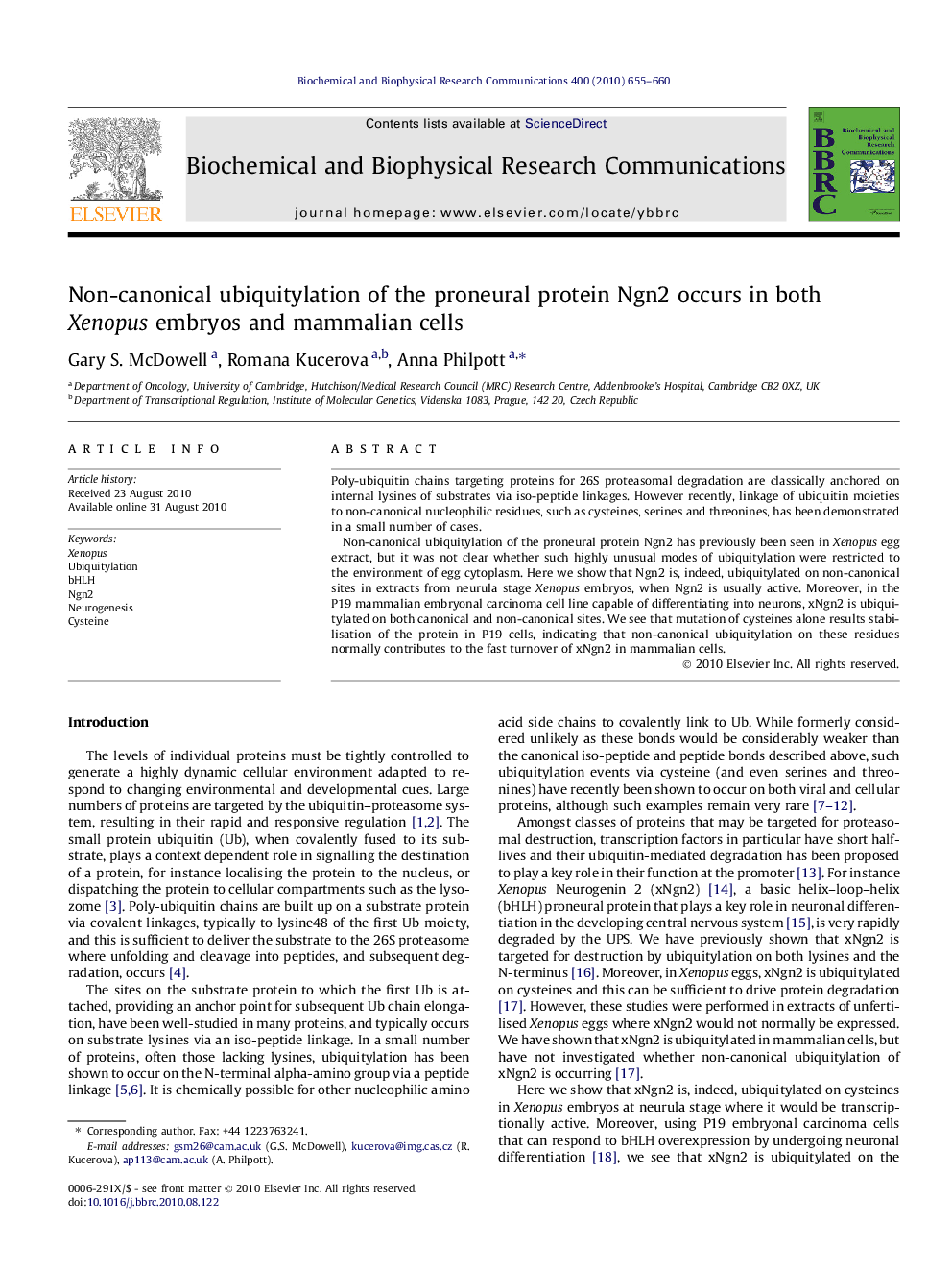| کد مقاله | کد نشریه | سال انتشار | مقاله انگلیسی | نسخه تمام متن |
|---|---|---|---|---|
| 1931368 | 1536787 | 2010 | 6 صفحه PDF | دانلود رایگان |

Poly-ubiquitin chains targeting proteins for 26S proteasomal degradation are classically anchored on internal lysines of substrates via iso-peptide linkages. However recently, linkage of ubiquitin moieties to non-canonical nucleophilic residues, such as cysteines, serines and threonines, has been demonstrated in a small number of cases.Non-canonical ubiquitylation of the proneural protein Ngn2 has previously been seen in Xenopus egg extract, but it was not clear whether such highly unusual modes of ubiquitylation were restricted to the environment of egg cytoplasm. Here we show that Ngn2 is, indeed, ubiquitylated on non-canonical sites in extracts from neurula stage Xenopus embryos, when Ngn2 is usually active. Moreover, in the P19 mammalian embryonal carcinoma cell line capable of differentiating into neurons, xNgn2 is ubiquitylated on both canonical and non-canonical sites. We see that mutation of cysteines alone results stabilisation of the protein in P19 cells, indicating that non-canonical ubiquitylation on these residues normally contributes to the fast turnover of xNgn2 in mammalian cells.
Research highlights
► Neurogenin2 lacking canonical ubiquitylation sites can be ubiquitylated and degraded.
► Neurogenin2 is ubiquitylated on non-canonical acceptor sites in mammalian cells.
► Cysteine ubiquitylation alone can target Neurogenin2 for proteasomal degradation.
► Non-canonical ubiquitylation occurs in neurula Xenopus embryos and mouse P19 cells.
► Transcription factors may undergo non-canonical ubiquitylation for rapid degradation.
Journal: Biochemical and Biophysical Research Communications - Volume 400, Issue 4, 1 October 2010, Pages 655–660